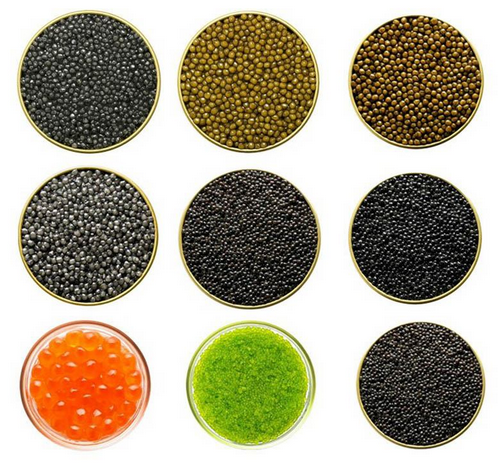Caviar, a symbol of luxury and sophistication, comes in various types, each with its unique flavor profile and culinary uses. If you’re looking to buy caviar, understanding the differences between them can help you make an informed choice. In this guide, we compare black caviar with other popular types of caviar to highlight their distinct characteristics and benefits.
Black Caviar and Red Caviar
Black caviar, obtained from sturgeon, is renowned for its luxurious, buttery flavor and delicate texture. It is often seen as the ultimate caviar, celebrated for its large, lustrous grains that offer a distinctive, briny taste.
On the other hand, red caviar, which comes from salmon, has a more intense and slightly salty flavor. Its vibrant orange-red hue and firmer texture make it a favored option for decorating dishes and adding a burst of color to culinary creations.
When evaluating black caviar vs. red caviar, the distinction is clear. Black caviar is distinguished by its premium quality and higher cost, attributed to the sturgeon’s extended maturation period and the intricate harvesting techniques involved. While both types of caviar are considered luxurious, black caviar is generally viewed as more prestigious and exclusive within the realm of fine dining.
Black Caviar and Pike Caviar
Pike caviar, also known as pike roe, is a lesser-known but delicious alternative to black caviar. It boasts a more pronounced fishy flavor and a smaller, firmer grain. Pike caviar’s color ranges from golden yellow to light amber, providing a visually appealing contrast to the dark, glossy appearance of black caviar.
While pike caviar is enjoyed by those who prefer a stronger, more distinctive taste, black caviar’s smooth, nutty flavor and luxurious mouthfeel often make it the preferred choice for special occasions and gourmet dishes.
Black Caviar and Halibut Caviar
Halibut caviar, or halibut roe, is another delightful option for caviar enthusiasts. It has a milder flavor compared to black caviar, with a subtle sweetness and a slightly chewy texture. The eggs are smaller and less firm, making them ideal for spreading on canapés or incorporating into sauces.
Black caviar, with its complex flavor profile and creamy consistency, is typically favored for more sophisticated palates. However, halibut caviar’s delicate taste and versatility in culinary applications make it a worthy contender in the caviar world.
Black Caviar and Roe of Flying Fish
Flying fish roe, commonly known as tobiko, is a favored component in sushi and various Asian dishes. Recognizable by its small, crunchy eggs in an array of vibrant hues like orange, red, green, and black, tobiko brings a delightful crunch and a subtly sweet and salty flavor to culinary creations.
When examining flying fish roe vs. caviar, the differences are notable. Tobiko provides a fun and colorful touch with its distinct texture and taste. In contrast, caviar, especially black caviar, is renowned for its silky, buttery flavor and luxurious nature. Caviar is typically associated with upscale dining, reflecting a level of refinement and sophistication that tobiko’s more playful and less elaborate profile does not quite achieve.
Black Caviar and Paddlefish Caviar
Paddlefish caviar, also known as American caviar, is obtained from the paddlefish, a freshwater species native to the United States. Though it shares a similar appearance to black caviar with its dark, glossy eggs, paddlefish caviar offers a milder and less briny flavor profile. It is often considered a more budget-friendly alternative to sturgeon caviar.
When comparing paddlefish caviar vs. sturgeon caviar, the latter stands out for its rich, complex flavor and luxurious texture, which makes it a favorite among caviar connoisseurs. While paddlefish caviar provides a more subtle taste and is an excellent choice for those exploring caviar for the first time or seeking a more affordable yet flavorful option, black caviar remains the top choice for those seeking the ultimate in caviar excellence.
Conclusion
In conclusion, black caviar stands out as the pinnacle of luxury and taste among various types of caviar. Its rich, buttery flavor and exquisite texture make it a coveted delicacy for gourmet enthusiasts. While other types of caviar, such as red caviar, pike caviar, halibut caviar, roe of flying fish, and paddlefish caviar, each offer unique flavors and culinary applications, black caviar remains unmatched in its prestige and allure. Whether you’re looking to buy caviar for a special occasion or to elevate your culinary creations, understanding these differences will help you make the best choice for your palate and preferences.






